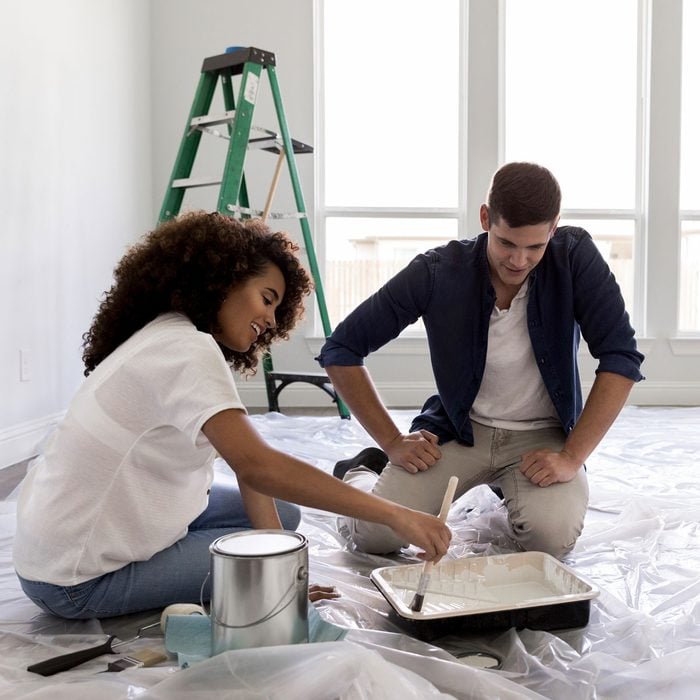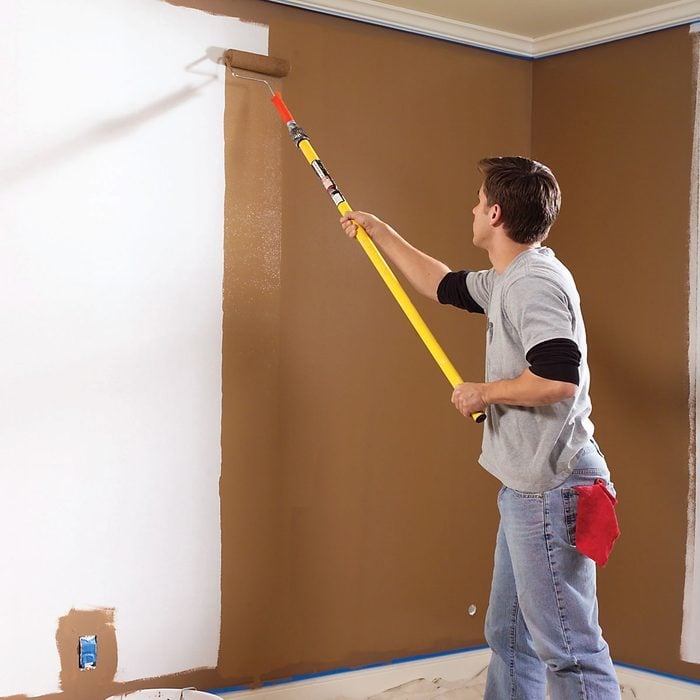Painting is one of the most important, most useful DIY skills in a homeowner’s playbook. With a minimal investment of time and money, you can put your personal spin on a room over a weekend. A new coat of paint is also an effective way to add value to a house, for those looking to sell.
You don’t even have to be an expert to tackle a painting project, but you will need the right tools, from quality roller covers to a do-it-all ladder. The following 12 items represent the most essential gear you’ll need for painting, outside of the paint itself. There are plenty more tools and accessories for painting that pros recommend that you can add as you gain experience or just want to find a few things to make painting a little easier, but this list will get you started.
A Real Paint Can Opener
Sure, you can use a flat-head screwdriver or any number of flat-edged tools to open a can of paint, but you can damage the lid and mess up the seal. So it’s worth spending a few bucks to get an actual paint can opener. Better yet, when you finish whatever paint job you’re working on, you can crack open a cold one with the other end of your opener.
Painter’s Tape
It may be tempting to try and get by with an old roll of masking tape you found laying around the house, but you’ll save time and your paint job by using painter’s tape, which has a less aggressive adhesive than masking tape. It won’t keeping taring as you pull it off, and you won’t risk pulling up the paint when you do. Just make sure to remove it as soon as you’re done. This ScotchBlue painter’s tape is great because it works on multiple surfaces.
Small Putty Knife
You’ll use it for embedding painters tape into woodwork for a tighter seal, which keeps paint from seeping behind the tape onto the wood. But you’ll also use it for scraping away grime; paint drips and even cutting clean tape joints at inside corners.
Roller Covers
Rollers make painting easier. They’re faster and cheaper than a brush, and they apply paint smoothly and evenly on a surface. But don’t go cheap when it comes to buying roller covers (also called roller sleeves). Cheap rollers don’t hold paint very well and can leave lint stuck in your paint. You’ll want a roller with at least a 1/2-in. nap (the thickness of the roller) for a smooth surface, thicker for rough exterior surfaces, so that the roller cover holds enough paint. The Purdy White Dove is a great option for an all-purpose roller cover, and there are other options depending on the surface and types of paint.
Roller Frame
Here again, you get what you pay for. A good roller frame will last forever, and it will keep the sleeves from sliding off in the middle of painting. A 9-in. frame for wide-open spaces and a 3-in. one for areas too narrow for the wider roller are the wisest choices.
Extendable Handle
You will rarely, if ever, spot a pro painter operating a roller frame with using the frame handle. Instead, they’ll always use a handle to gain leverage, reach, and the strength of two hands and arms. That not only hugely speeds up the rolling, it saves wear and tear on the wrist and hand. It’s a must if you’re painting a ceiling.
Sash Brush
A sash-brush has an angle on the end of the bristles. It was originally designed for cutting in around window sashes but nowadays is a pro’s go-to brush style for any cutting in done at inside corners, against ceilings and around woodwork before rolling the walls. It’s handy for painting trim too. The Shortcut Polyester Angle Sash Brush by Wooster combines a full-size angled head and a short, soft-grip handle for excellent control and less hand fatigue.
Canvas Drop Cloth
Never use plastic sheathing for drop cloths. Canvas drop cloths are easier to spread, and are non-slip so they’re much safer. It’s well worth investing in at least two different canvas cloths, one for large areas and a long, narrow ‘runner’ style for hallways, stairs and to lay along walls to take care of drips while cutting in and rolling.
Roller Trays
You’ll need at least a couple of paint trays for the typical job, a large one, at least 9-in., and a small one for the shorter rollers. There are plenty of options to choose from. Plastic is fine, but this metal one from Wooster will last forever. This 4-in. plastic tray is handy for odd jobs too.
5-Gallon Bucket and Painting Screen
These will come in handy when you have a large room or several rooms to paint. Pour a couple of gallons of paint into the bucket, mix well and drop the screen over the bucket lip. It makes quick easy work of dipping, screening off the sleeve and applying paint to the wall.
Dipping Pail
For cutting in you’ll want a dipping pail that you can carry around with you to dip your brush in. An empty paint can will get the job done, but we like the HANDy Paint Pail. The adjustable hand strap makes it very comfortable and convenient to use. There’s even a built-in brush scraper to help remove excess paint. You can also buy liners to make cleanup a little easier.
A Multi-Purpose Ladder
The Xtreme is Little Giant’s do-everything ladder. Each side adjusts independently to give you the option of a four- to seven-foot stepladder. Or you can flip it open to make an extension ladder that extends to 17 ft. One of its best features is the ability to adjust the sides to different heights for use on stairs and uneven ground. You can also take the ladder apart to create two trestles that can support a work plank.
This model has several enhanced features, including extra-strong Quad-Lock Hinges, a wide Comfort Step and an Airdeck Workstation. If there’s a downside, it’s the cost. If this is beyond your budget, the company makes other less expensive ladders with some of the same features.
